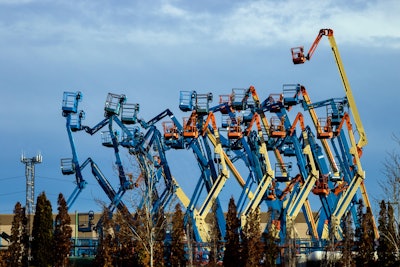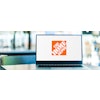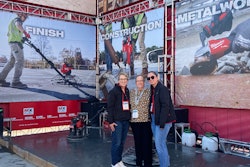
In recent times, contractors in the construction industry have faced a challenging trend: the significant rise in the cost of renting construction equipment.
A report from the American Rental Association indicated that in the third quarter of 2023, the year-over-year growth was expected to be 7.6% in 2023 and 3.1% in 2024. But projections in November put that figure at 11.8% growth in 2023 totaling $71.5 billion in construction and general tool rental revenue. As for 2024, a 7.1% revenue increase is now expected.
There are a number of practical strategies and technologies that contractors can employ to mitigate the financial impact of these escalating expenses.
Understanding the Rental Cost Surge
The first step in addressing this issue is understanding the factors that are contributing to the rise in rental costs. Economic fluctuations, increased demand for construction services, a shortage in equipment supply, and higher maintenance costs for equipment are among the key drivers. These factors combine to create a market in which rental prices are consistently escalating, placing additional financial burdens on contractors.
It should be noted that domestically, the use of rental equipment compared to owned fleet continues to rise as well. This trend is more in line with the “rented to owned” mix employed in Europe.
Strategic Responses to Rising Costs
There are numerous approaches that contractors can take to negotiate rental costs downward – and keep them down. It’s likely that you’re familiar with many of these strategies. Unfortunately, it can be easy to get so wrapped up in the day-to-day logistics of running a business or managing a project that these common-sense strategies get ignored. The key, then, is to ensure that you actually implement them.
Negotiate Initial Rates: The cornerstone of cost management in equipment rental is the art of negotiation. Contractors must initiate discussions with rental companies to secure favorable rates. Much like negotiating a car purchase, understanding the market rate, and leveraging competitive pricing is imperative. Contractors should be aware that rental companies have pricing flexibility and may offer significant discounts on listed rates.
Additionally, rates may heavily vary from region to region. Consequently, negotiating national rates may be of benefit in some cases depending on your primary areas of business, where regional rates can be more competitive when doing business in lower-cost markets. Keep in mind: negotiating project-specific rates can come into play when very specific types of equipment will be in high demand over extended periods of time.
Manage Rate Receipts: After securing the negotiated rates, ensure that those rates are consistently and accurately applied. Vigilant invoice management helps contractors verify they are being charged the agreed-upon rates. Miscommunications and billing errors can lead to overcharges, so you must regularly review invoices against contracted rates. In short, make sure you’re getting the rates you negotiated based on the region or project associated with the rental. Having a system or program that automates the comparison of your negotiated rates with those that were actually contracted can save you a lot of time and money every month.
Gain Visibility and Control Over Rental Assets: A common challenge in managing rental costs is the lack of visibility over all rented assets. Approximately 25% of rented equipment may go unchecked, leading to inefficiencies and unnecessary costs. Contractors must implement systems that allow for tracking and monitoring of all equipment, ensuring optimal utilization and avoiding redundant rentals. This means visibility at both a project and corporate level in real-time. Let’s face it: everyone wants to avoid renting a piece of equipment that is already sitting in our yard.
Document Delivery and Call-Off Conditions: We’ve all heard horror stories of returning a piece of rental equipment, then later receiving a bill for repairs or damage the contractor believes was not their fault. This is why documenting both the delivery condition and release condition of rental equipment is paramount. Electronic inspection forms with in-depth questions and, most importantly, photo documentation can make a significant difference; the difference between extended disputes and thousands of dollars on a rental on one hand, and a simple email of proof on the other.
Automated Alerts for Rental End Dates: One of the most effective and yet most overlooked ways of reducing rental costs is managing the rental end dates. In fact, it is estimated that 10%-30% of rental costs could be avoided simply by ensuring that rental assets get released in a timely matter. A system that provides visibility at a project team level, along with implementing automated alert systems for rental end dates, can prevent these oversights, ensuring timely return and no forgotten equipment left in the field.
Long-Term Rental Agreements: Consider negotiating long-term rental agreements instead of short term. Long-term rentals often come with lower monthly rates, providing substantial savings over time, especially for equipment that is needed and utilized on a regular basis.
Optimize Rental Timing and Duration: Carefully plan the rental timing to align with the project schedule. Avoid renting equipment too far in advance or keeping it longer than needed, which can lead to unnecessary costs. Additionally, manage the duration of rentals effectively, returning equipment promptly to avoid extra charges.
Bulk Rentals and Package Deals: If multiple pieces of equipment are needed, explore the possibility of bulk rentals or package deals. Rental companies often offer discounts for large or bundled orders.
Optimize Equipment Utilization: Maximize the use of each rented piece of equipment. Plan tasks and projects efficiently so that the rented equipment is used continuously and effectively throughout the rental period. Using it on a sporadic basis is wasteful and ultimately leads to longer rental periods.
Leveraging Technology: Asset Management Software
Asset management software plays a pivotal role in streamlining the management of rental equipment. It provides an integrated platform for:
- Negotiating rates directly with suppliers.
- Automatically comparing rates across suppliers for specific projects.
- Managing and tracking rental durations with automated alerts.
- Ensuring compliance with negotiated rates through systematic invoice verification.
Tool using the latest technology simplify these processes by allowing contractors to request, validate, and manage rates; automate rental visibility at a project level for teams; inspect and document equipment conditions; and send rental alerts for end of rental and communicate release (call-offs) in one click, all in one place. This technology enables contractors to make informed decisions quickly, reducing administrative burdens and focusing on optimizing rental costs.
The Triangle of Rental Management: Price, Duration, Quality
While managing rental costs is crucial, contractors must also consider the quality of the equipment. Downtime due to equipment failure can be costly, impacting project timelines and overall efficiency. Thus, a balanced approach considering price, duration, and quality is essential. Establishing strong relationships with dependable suppliers who provide well-maintained equipment goes a long way towards achieving these goals; these relationships can prove to be just as important as negotiating favorable rates and effectively managing rental periods.
Combating the rising costs of construction equipment rentals requires a multi-faceted approach. Contractors must sharpen their negotiation skills, vigilantly manage rate receipts, and maintain visibility over their assets. Leveraging asset management software built specifically for the contractor to manage rentals streamlines these processes. Additionally, a balanced focus on price, duration, and quality — supported by strong supplier relationships — is key to achieving efficient and cost-effective equipment rental management.
As the industry evolves, embracing these strategies and tools will be crucial for contractors to remain competitive and profitable in a challenging economic landscape.





















